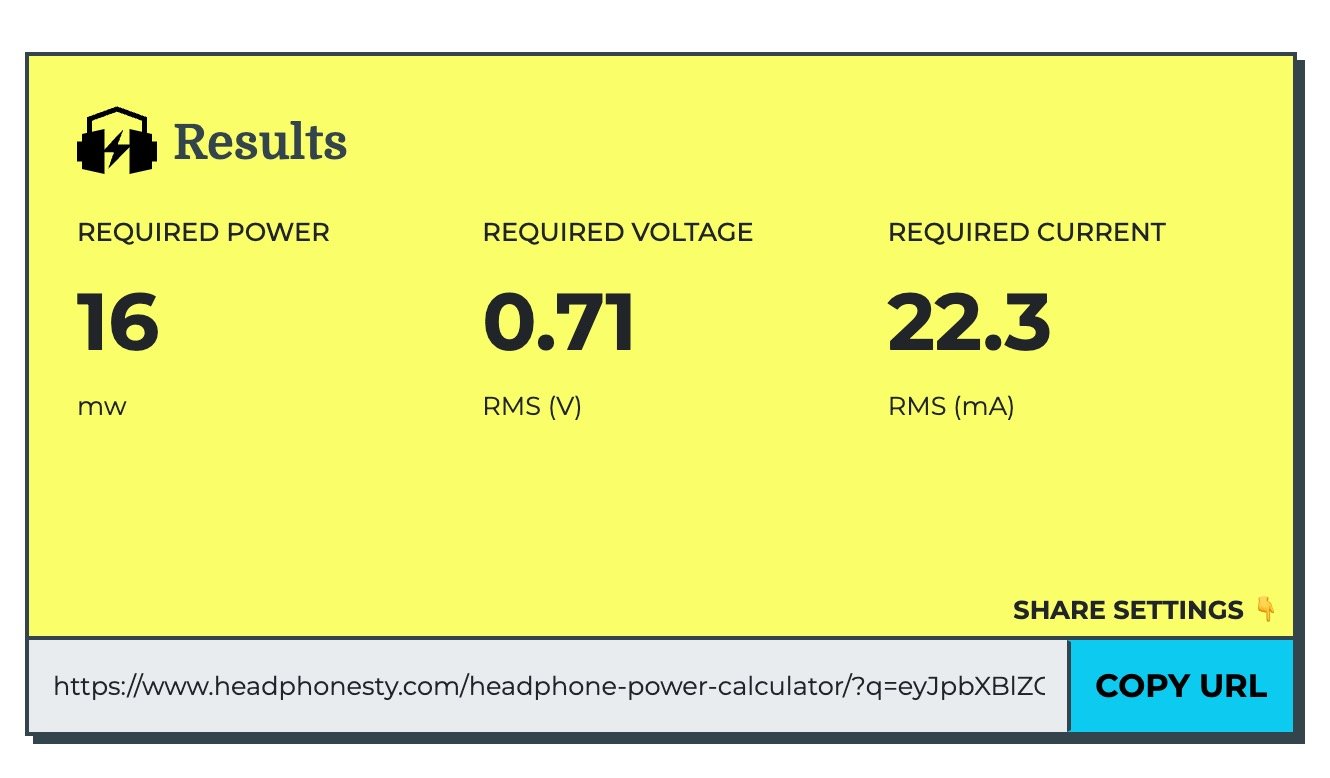Purpl3n3ss
Member
- Joined
- Jul 26, 2022
- Messages
- 13
- Likes
- 2
So, I understand that loudness is supposed to be the only thing that power dictates, not other characteristics of the sound.
However, here's something I tried:
I took my 32ohm-impedance/94db-mW-senstivity headphones (Hifiman Arya SE) and drove them directly from the 1Vrms output of a DAC (Chord Qutest, which has very low output impedance). The calculated volume is 108.9db.
Then I drove the same headphones setting the same DAC to output 3Vrms. The calculated volume is 118.5db. But, upstream from the DAC, in software, I attenuated the signal by the difference in volume - I had to use 10db instead of 9.6db - resulting in a volume of 108.5db.
With this (close) volume matching done, the second setup, which puts 282 mW into the headphones instead of 31mW in the first setup, clearly had a greater depth of soundstage.
What could be going on here?
A note about the software attenuation: It was done in HQPlayer using 15th-order noise-shaping (LNS15), while upsampling to 768Khz. My understanding is that this is about as transparent as software attenuation gets. And in any case, it was the version with the software attenuation that displayed the deeper soundstage.
However, here's something I tried:
I took my 32ohm-impedance/94db-mW-senstivity headphones (Hifiman Arya SE) and drove them directly from the 1Vrms output of a DAC (Chord Qutest, which has very low output impedance). The calculated volume is 108.9db.
Then I drove the same headphones setting the same DAC to output 3Vrms. The calculated volume is 118.5db. But, upstream from the DAC, in software, I attenuated the signal by the difference in volume - I had to use 10db instead of 9.6db - resulting in a volume of 108.5db.
With this (close) volume matching done, the second setup, which puts 282 mW into the headphones instead of 31mW in the first setup, clearly had a greater depth of soundstage.
What could be going on here?
A note about the software attenuation: It was done in HQPlayer using 15th-order noise-shaping (LNS15), while upsampling to 768Khz. My understanding is that this is about as transparent as software attenuation gets. And in any case, it was the version with the software attenuation that displayed the deeper soundstage.
Last edited:





